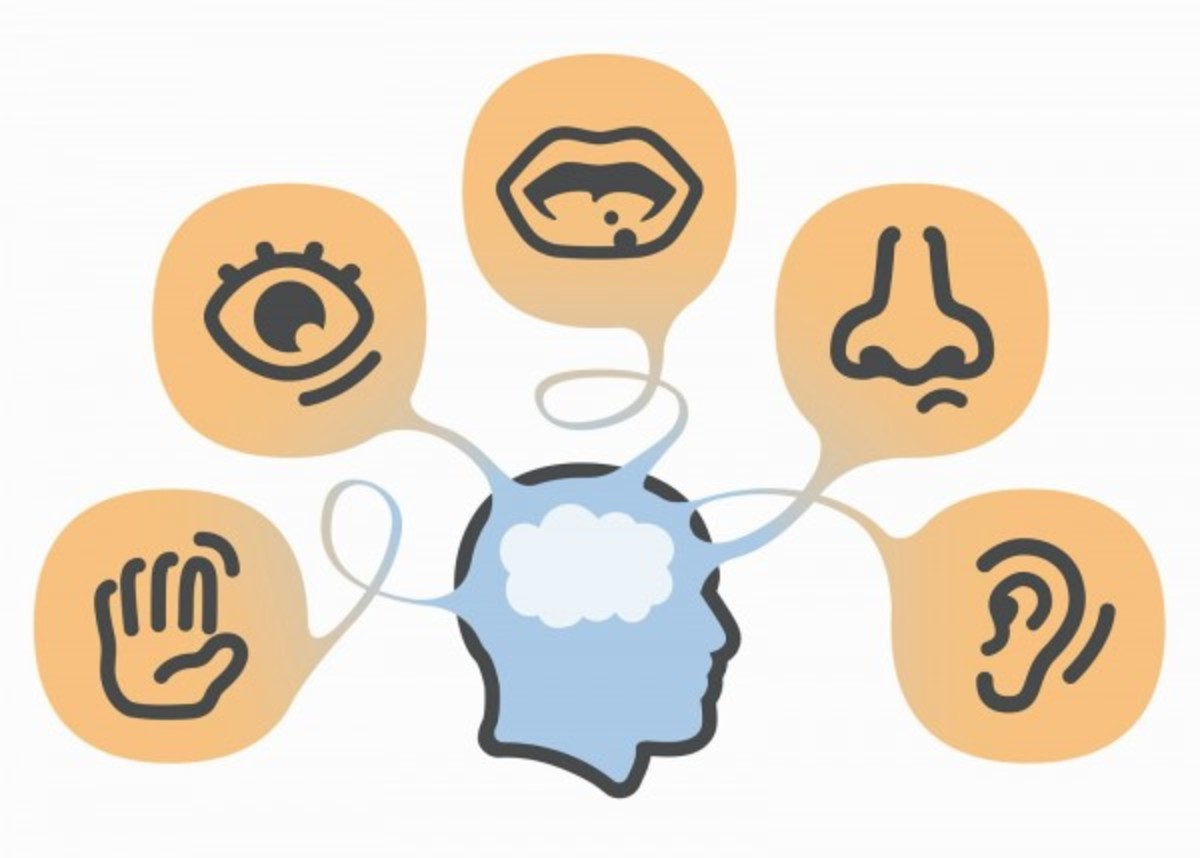5 Senses
Biology
Level
1

For which of the following 5 senses does the brain have the most direct contact with the environment?
Smell
Touch
Sight
Hearing
Taste
This section requires Javascript.
You are seeing this because something didn't load right. We suggest you, (a) try
refreshing the page, (b) enabling javascript if it is disabled on your browser and,
finally, (c)
loading the
non-javascript version of this page
. We're sorry about the hassle.
For the 5 senses in the body, the stimulus (e.g. sound, light, odor) will activate the nerves to send the input information to the brain directly or via the spinal cord.
Out of these senses, the touch receptors are widespread over the skin layers, detecting pressure, temperature, and vibration acting on the body. These inputs usually travel to the nerve roots before reaching sections in the spinal cord, which then relay the nervous impulses to the brain. Nevertheless, for the facial area, the touch receptors are transmitted through a cranial nerve (CN) , or nerve arising from the brain instead of the spinal cord, called trigeminal nerve (CN V) . Still the brain itself has no pain receptors and do not have direct contact for touch.
For taste and hearing, these inputs can be transmitted through cranial nerves connecting to the brain stem. On the tongue, the taste buds send the food information through the facial nerve (CN VII) and the glossopharyngeal nerve (CN IX) for the anterior and posterior parts of the tongue respectively.
In the ears, the sound waves vibrate and stimulate the nerve cells of the vestibulocochlear nerve (CN VIII) behind the eardrums. However, for these senses, the nerves are still considered peripheral from the brain, so such direct contact with the brain can not happen either.
The nerves for sight and smell are parts of central nervous system, meaning these nerves are actually certain parts of the brain themselves! For the eye, the photoreceptor cells are in the retina , which relay color and perspectives of the image directly to the optic nerve (CN II) . However, the organ exposing directly to the environment is the transparent cornea, which acts as a medium for light to pass through.
On the other hand, in the nose, the smell is sensed by the olfactory nerves (CN I) arising directly from the olfactory bulbs , which are parts of the forebrain. These nerves go through small foramina (pores) of the nasal bone called cribiform plate and have direct contact with the air and odor chemicals in it, making this cranial nerve to have the most direct contact with the environment.